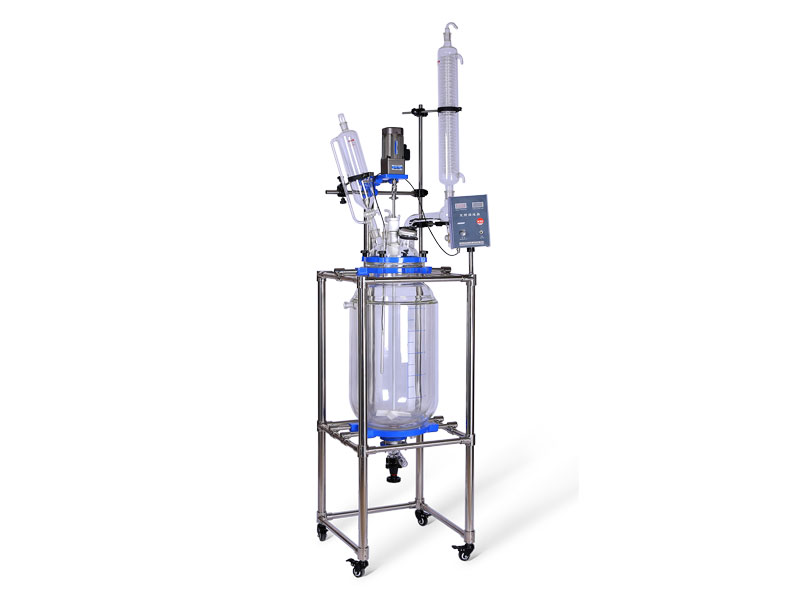Kettle glass reactor assembly|Glass reactor Manufacturer
Double-layer glass reactors, also known as (kettle glass reactors), are a general term for containers that are widely used in the process industry. Used in various process operations such as solids dissolution, product mixing, chemical reactions, batch distillation, crystallization, extraction and polymerization.
A typical glass reactor consists of a glass vessel with a stirrer and an integral heating/cooling system. The size of borosilicate glass containers ranges from 1L to 100L. The liquid or solid is supplied through the connection on the top cover of the reactor. The steam is discharged through the connection at the top and the waste is usually discharged from the bottom.
The advantage of a glass reactor is its versatility and visibility. A single container system can perform a range of different operations without breaking the container, which is useful when handling toxic or potent compounds.
Precautions for use of double-glass reactors
1. Check that the power supply voltage is consistent with the specifications provided on the machine nameplate.
2. Plug in the power plug, turn on the power switch on the inverter, and use the speed knob to select the appropriate speed.
3. The flow of material and the power of the motor speed may resonate at a certain point. Please change the speed of the motor to avoid resonance.
4. After the stir bar is installed, it must be rotated by hand. Pay attention to whether the concentricity is good. If the heart is not good, the heavy clamp should be loosened. After the clamp is turned on, turn on the power again. Adjust slowly from slow to fast. 5. Adjust with a stir bar. The stirring leaves can be up and down 5 cm as needed.
6. If the seal performance of the kettle is found to be degraded, please check the rotary bearing in the stirrer sleeve.
7. The glass equipment of this reaction device is all made of GG.17 low expansion coefficient high temperature resistant borosilicate glass. The user should self-fit glass bottles such as reaction bottles. Please confirm the quasi-glass material to ensure safe use.
8. The external layer of the interlayer on the glass kettle can be heated by the hot oil. The coolant can be used for low temperature reaction. If it is heated by steam, it should not exceed 0.5K-1K (try not to use pressure steam to heat).
9. When the test is carried out at low temperature, the discharge valve at the bottom will be frosted. When using the valve, it must be partially thawed to prevent the glass from being broken.
10. If there are particulate objects in the solution during use, it is possible to store the remaining materials on the PTFE piston of the valve. When used again, the airtightness will be affected. Be sure to clean and re-use each time after discharging. .
